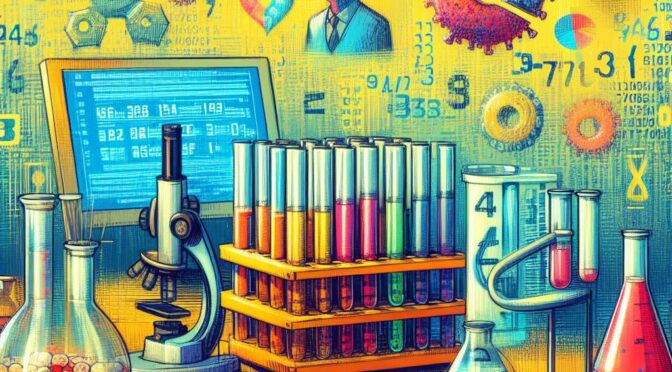Age reversal works in primates to restore vision. Next up: age reversal in humans.
-David Sinclair (see also Good News of the Month below). Source.
This month’s theme: Questions related to the sharing of health data for longevity
Introduction
We have decades of health data for billions of people. We have also data on smartphones and wearables about the activities of hundreds of millions of citizens. We could potentially see almost in real time what of are the effects of all the drugs used in many countries to cure and prevent diseases related to old age. We could see the effects of drugs combined, constant if new diseases appear or on the contrary, if patients are going better, see if people have more or less physical activities.
However, for this to be possible, we need not only data but data that we can access. At the moment, we have situations where we overuse some data and do not use most other data. The principal obstacles are questions related to privacy, private interests to keep data available only to a few, and curation. In this newsletter, we will not approach questions related to the « property » of data.
Questions related to privacy.
There are two main ways to respect privacy before sharing health data: anonymization and pseudonymization.
Anonymization is the process of removing or altering personal or identifiable information from data so that the individuals to whom the data pertains cannot be readily identified. In simpler terms, it’s a way to hide someone’s identity in a dataset. In this process, theoretically, there is no way back, once the data is anonymized, one cannot anymore know who was the person with the information.
Pseudonymization is the technique used to replace or encrypt personally identifiable information in data with artificial identifiers, or pseudonyms. These pseudonyms allow the data to be used for analysis or other purposes while still protecting the identity of the individuals involved. It’s like giving each person in a dataset a fake name or code to protect their real identity. In this process, theoretically, you can find the information back (by replacing again the pseudonyms with the real names).
Anonymization is better for privacy but less good for research. Because for research, sometimes you need to find out more about the subjects of the experiment after the experiment is started. And anonymization makes it impossible to find more.
Of course, in any situation, it is also important to remember concerning privacy for health data that:
- It must be prohibited for researchers to use data for other goals than for research.
- Access to data has to be registered and kept for a long period so that potential users know they risk being in trouble for an illegitimate use even if this misuse is detected after a long time.
Curation
Health data curation refers to selecting, organizing, and managing health-related data to ensure its accuracy, relevance, and accessibility for healthcare professionals and researchers. Health data curation aims to improve the quality and usefulness of health data for analysis, research, diagnosis, treatment, and public health initiatives. We need institutions like Data Curation Centres (DCC)
Here are some examples of data curation in action:
- Data Acquisition: This phase entails the careful selection and procurement of data from a multitude of origins, spanning databases, online platforms, and other digital repositories and from a multitude of sorts: electronic health records, medical imaging, clinical trials, and wearable devices. It also involves vetting the data to ensure its reliability and suitability for the intended purpose.
- Data Cleansing and Transformation: This step focuses on purging and reshaping data to enhance its utility. It involves eliminating redundant entries, rectifying inaccuracies, and standardizing data formats to facilitate analysis.
- Data Organization: Data has to be methodically arranged into logical groupings, be it by chronological order, classification, or source attribution. Such an organization streamlines data retrieval, utilization, and analysis.
- Data Accessibility: Making data readily accessible to users is paramount. This can be achieved through user-friendly interfaces, web-based tools, or Application Programming Interfaces (APIs), enabling seamless data retrieval and exploration.
- Data Preservation: Ensuring data longevity involves regular backups, archival procedures, and stringent security measures to safeguard against unauthorized access or loss.
Synthetic Data: A solution for privacy?
Synthetic data is information that is artificially manufactured and not generated by real-world events. It could be a solution to avoid privacy questions and permit better health research. However:
- Since health synthetic data is generated based on real data, some specialists consider that they still can be considered personal data.
- Since synthetic health data is generated based on already known information and hypotheses, it can be that it is not showing what real health data will show (synthetic data will not include « surprising » data).
EHDS
The European Health Data Space (EHDS) is a specialized ecosystem designed to enhance the management of health data within the European Union. It encompasses regulations, standard practices, infrastructure, and governance to achieve several key objectives:
- Empowering individuals by granting them greater digital access to and control over their health data, both nationally and across the EU.
- Cultivating a unified solution for electronic health record systems, pertinent medical devices, and high-risk AI systems.
- Establishing a reliable and efficient framework for utilizing health data in research, innovation, policy-making, and regulatory activities (known as secondary data use).
EHDS stands as a crucial component of the broader European Health Union initiative. It builds upon existing regulations such as the General Data Protection Regulation (GDPR). The goal is to strengthen the European Health Union, ensuring that member states are equipped to address health crises effectively, have access to affordable and innovative medical resources, and collaborate to enhance disease prevention, treatment, and post-care.
Examples of how the EHDS will function
Example 1: A woman living in Portugal is going on holiday to France. She gets sick in France and needs to see a local general practitioner. Thanks to the EHDS and MyHealth@EU, a doctor in France will see on his/her computer the medical history of this patient in French. The doctor can prescribe the necessary medicine based on the medical history of the patient, avoiding for instance products to which the patient is allergic.
Example 2: A health tech company is developing a new AI-based medical decision support tool that assists doctors in making diagnostic and treatment decisions following a review of the patient’s laboratory images. The AI compares the patient’s images with those of many other previous patients. Through the EHDS, the company can have efficient and secure access to a large number of medical images to train the AI algorithm and optimize its accuracy and effectiveness before seeking market approval.
Health Data Hub example
France possesses a substantial and well-structured data repository, which presents an international competitive advantage for research and innovation. However, accessing this data for projects of public interest has historically posed significant challenges.
In response to these challenges, the Health Data Hub was established as a public entity. Its primary goal is to facilitate access for project coordinators to non-identifiable data hosted on a secure platform, in full compliance with regulations and citizens’ rights. This platform enables the cross-referencing and analysis of data to enhance the quality of care and patient support.
Conclusion
Some perspectivists say « Data is the new oil« . We could also say « Health Data is the new penicillin » (or even more than that). Contrary to oil, (curated) health data are complicated to use not because of natural obstacles, but because of a lack of goodwill and good laws to share it, Contrary to oil, the more we use (curated) health data, the more it can be useful. It could become a precious common good.
Health Data is one of the keys to healthy longevity. We need it to measure progress, to understand health dangers (pollution, new diseases…), to accomplish clinical trials, and to make us more human.
The good news of the month: Gene therapies and rejuvenation.
Californian researchers declared that gene therapy-mediated partial reprogramming extends lifespan in aged (wild-type) mice. And the progress announced is important (even if only about the remaining lifespan of already quite old mice). The inducible OSK system, in those 2 old years male mice extends the median remaining lifespan by 109% over wild-type controls.
The abbreviation OSK is used for the expression of three Yamanaka factors, Oct4, Sox2, and Klf4.
Life Biosciences (Life Bio) and David Sinclair announced tests in nonhuman primates with a new gene therapy that uses a partial epigenetic reprogramming approach to restore visual function. It is affirmed that when eyes were treated with OSK after laser damage, it significantly restored pERG responses compared to controls, consistent with restoration of vision. This is very promising even if It was not tested in old (sick) primates but on healthy subjects.
For more information


